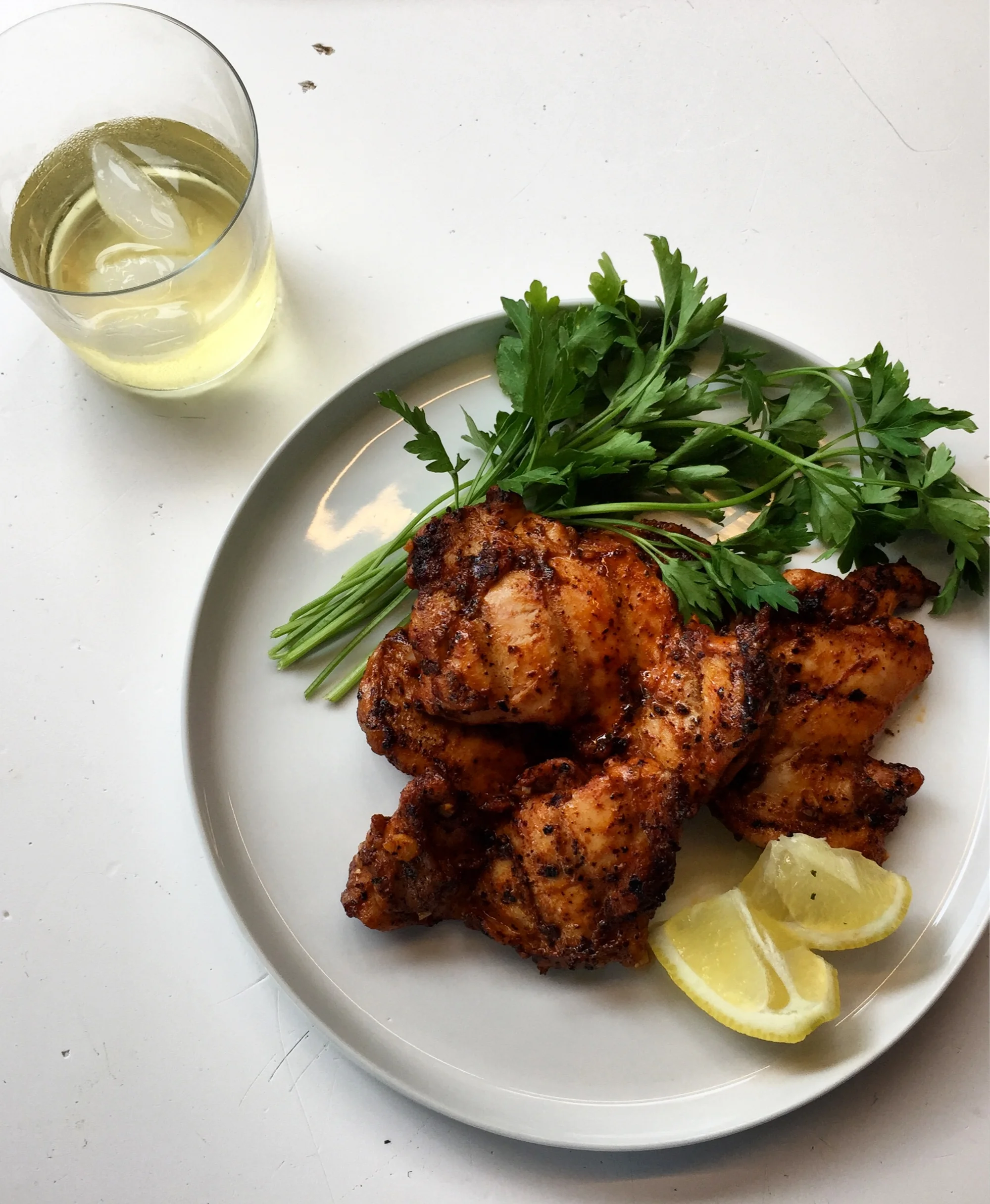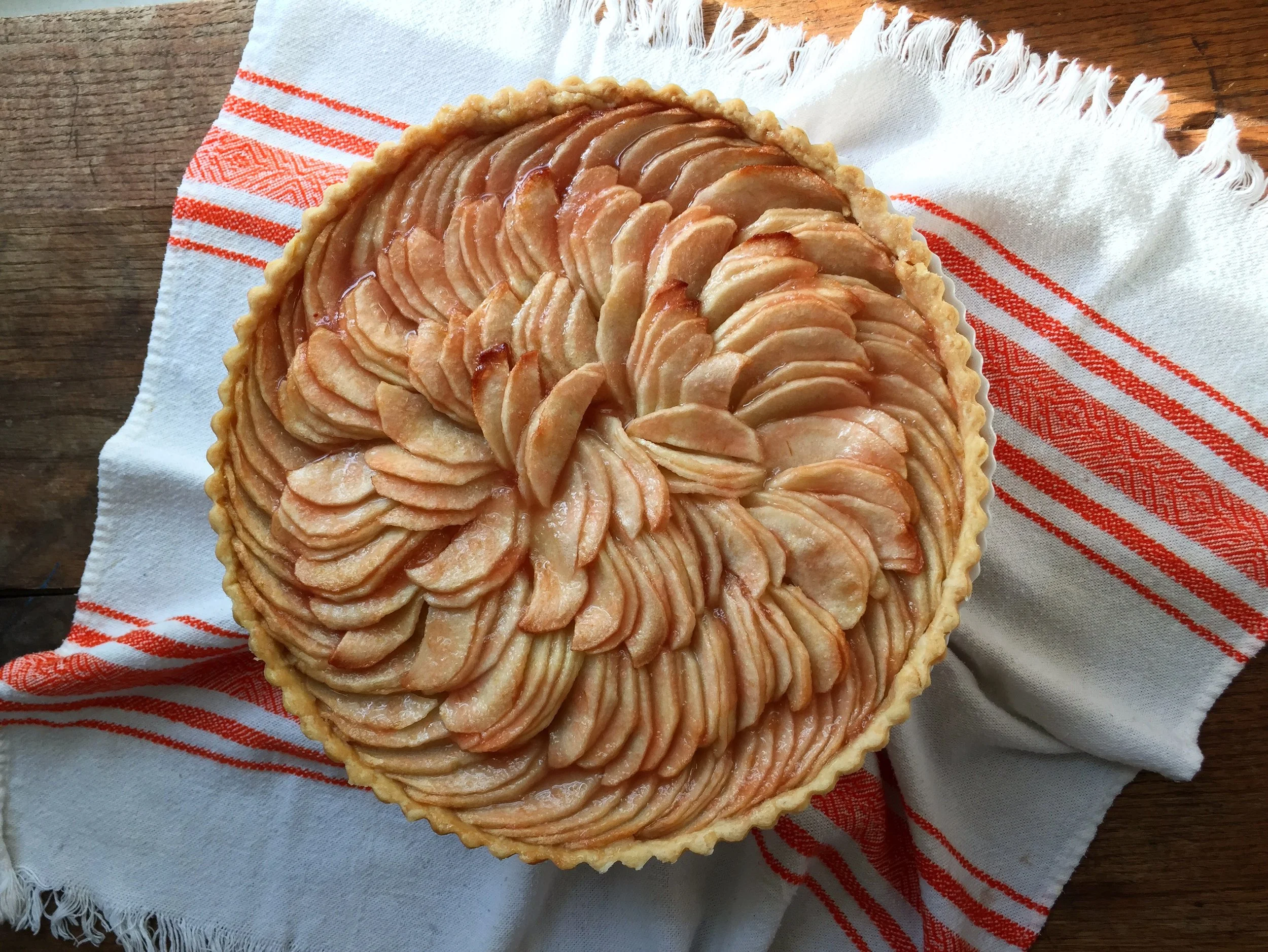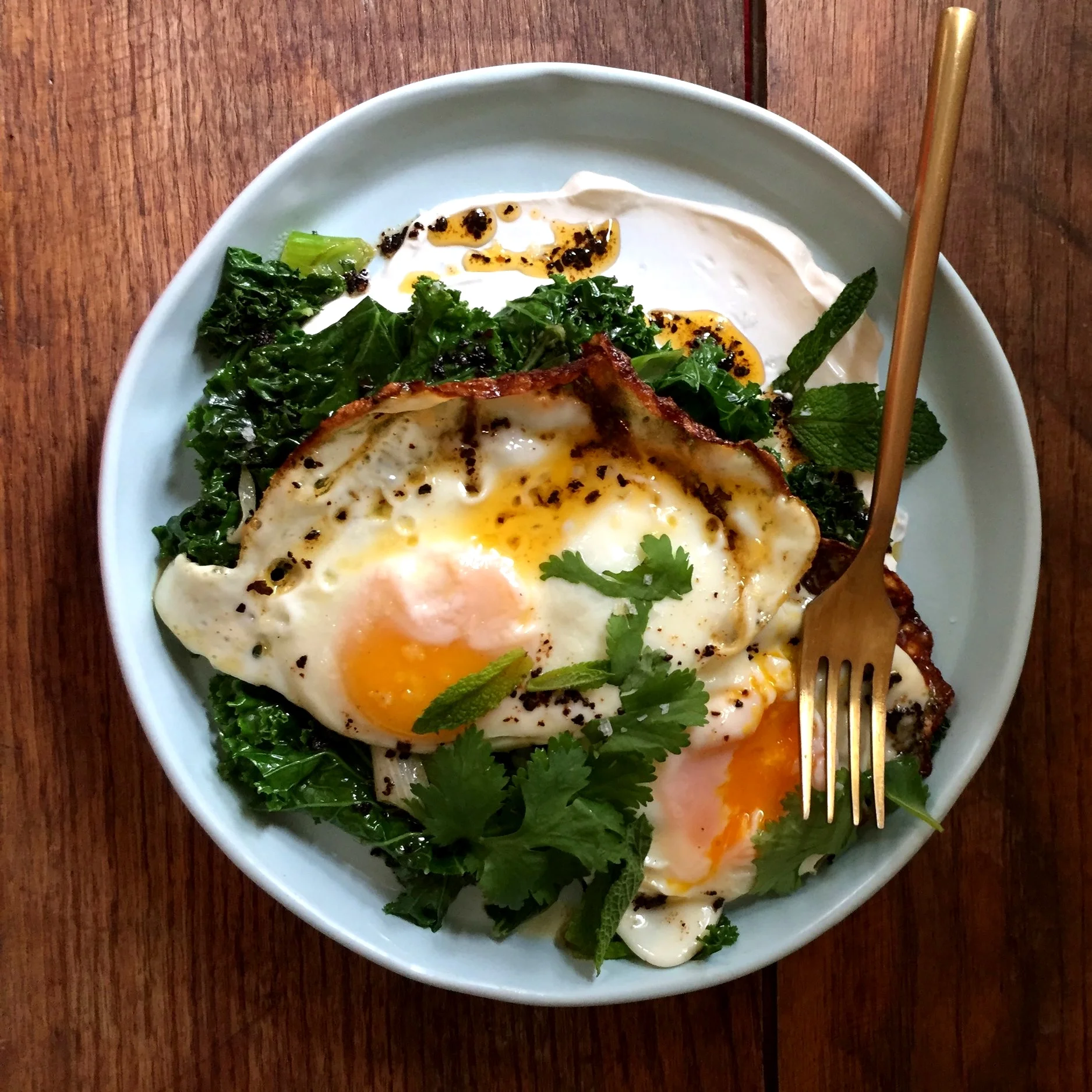A Real Nice Clambake

When I tell someone I grew up outside of Boston near the Cape, there are a few common responses. Someone asks me where in Harvard Yard I parked my car or they want to talk lobster. They want to know what the hell a clambake is.
Great question, that. Into a pot or a make-shift oven dug in the sand go all manner of shellfish (lobster, littleneck clams, mussels). To this we add a layer of potatoes, corn, and sausage. There’s an infinite number of welcome variations. You can sub in chorizo or shrimp, throw in a little white wine or beer to the steaming liquid. The clambake is to New England what BBQ is to North Carolina or a pig roast is to a Hawaiian luau. It’s our history filtered into one perfect community meal. It’s nothing short of genius.
But first—a history lesson! Over the years, my love for New England has been complicated by that history. It’s nearly impossible to talk about our food heritage without reflecting our treatment of indigenous people. First contact from Europeans in the century leading up to the colonies’ establishment decimated the indigenous population significantly. Unsurprisingly, colonists viewed this less as a tragedy than an opportunity. In 1622, upon returning to New England to find entire villages wiped out, John Smith famously wrote “God had laid this country open for us.” Whattaguy, that John fellow.
I think about our lazy historical thinking a lot. About blindspots. It comes up often when I drive towards home on I-95 and pass towns with Pequot names. I want to tell you how to make this delicious thing that reminds me of home, but I also feel a need to mention how when I pass exit 90 I think of the genocidal maniac John Underhill who used scripture to justify a massacre of 700 Pequot in Mystic. The feeling isn’t guilt. It’s more of a barely tempered rage. I want to talk about how much I miss New England without forgetting Captain John Mason and later Governor of Connecticut, who held his torch to a wigwam filled with women and children and wished “to cut remembrance of them from the earth.”
Just as its said history is written by the victors, too often they write our recipes. The story of the New England Clambake is no different from other revisionist histories we grow up with; having less to do with honoring the past than using it to justify our narrative in the present. There are too many stories we tell ourselves to make ourselves feel better. We can’t discuss the legacy of Southern classics like shrimp & grits without acknowledging slavery and the black men and women who developed them. Neither can we comfortably celebrate New England’s most famous dish without crediting those who were making it for a millennia before colonization. It’s a history I was rarely taught as a child, and much of it happened in my own backyard. We can’t rewrite history, but I believe we have a responsibility in reframing it. Yes. Let’s make the amazing things. Let’s celebrate summer. But…at the very least, can we do it with historical accuracy?
Who figured out all roads lead to delicious if you dig a pit on the beach and fill it with the best seafood in the land? Revisionists would have us to believe the clambake tradition originated at the Plymouth’s Old Colony Club in the 1770s. It’s a romantic idea to imagine these descendents of Englishmen paying tribute to their forefathers, who worked in harmony with their indigenous neighbors to survive off the land. Here is what I do know: The hardwood steaming method dates back some 2,000 years to tribes from the Rhode Island’s Narragansett to Maine’s Abanaki who lived along the rocky shores and left clamshell middens in their wake. In the summers, the Wampanoag of southeastern Massachusetts held extensive seafood feasts called appanaugs, translating literally to clambake. We have them to thank for the name. Pits were dug in the sand and lined with rocks, then hardwood fires were built and the ashes were spread along the rocks. Once the rocks were hot, the pit master set to work lining the bottom with rockweed, the brown seaweed clinging to the shoreline. Known for its bubbles which puff up with steam when heated, it lends both salinity and sea flavor to the mix. Clams, quahogs, corn on the cob and other shellfish were then layered on top of the seaweed, covered with a wet tarp and buried with more rocked until cooked. Afterwards, the tide would come in and clear away any debris, leaving little evidence of the celebration behind.
Even today, the vibe is much the same. A clambake is always a party. It’s about gathering your closest friends, getting your hands dirty, and preferably, eating al fresco at a picnic table with everything dumped onto a thick layer of newspaper. Since then more ingredients have been introduced into the cannon—potatoes, onion, sausage, fresh-caught mackerel and, of course, lobster. Those uninitiated to cooking the big red bug may feel it’s intimidating but it doesn’t have to be. I will mention I’m not a fan of cooking any lobster that’s still alive. It’s a bit grisly, but I prefer dispatching my lobsters with the tip of a sharp knife between the eyes before steaming. If that sounds too daunting, a good fish monger can kill them for you in advance, just be sure to cook them quickly after. You could omit the lobster and add steamers or mussels instead. I’ve never myself made a clambake on the beach, but I’ve found it just as easy to make at home in one big pot, and cleanup couldn’t be easier.
Success lies in planning ahead. At home, I’ve long relied on Ina Garten’s recipe. It’s pretty much foolproof. Buy only what looks best at the moment (for instance, if the clams at the store look sad, get mussels, or if there’s no andouille, try chorizo or kielbasa). Try to make sure what’s in the pot is relatively the same size so everything cooks at the same rate. I’ve found fingerling or small creamer potatoes are perfect for this. What is not optional, in the opinion of my mother, is the melted butter served alongside. She melts practically a stick of butter per person. “The better to dip your bread in it later!” she insists. I’ve stopped trying to win that argument.
Fearless Kitchen Clambake
INGREDIENTS
1/4 cup. olive oil
4 shallots, peeled, thinly sliced horizontally
1 1/2 lbs. fingerling or small potatoes (no bigger than 2” thick)
3 ears of corn, shucked and split into halves
1 1/2 lbs. andouille sausage, sliced into 1 1/2 inch pieces on the diagonal (optional)
2 dozen littleneck clams, scrubbed clean and disgorged of sand
1 1/2 lbs. shell-on shrimp
4-5 lobsters (depending on how greedy everyone is feeling)
1 tbs. kosher salt, plus more to taste
1 teaspoon freshly cracked black pepper
3 cups dry white wine
2 sticks of unsalted butter, melted (for serving)
1 lemon, divided into 6 wedges
DIRECTIONS
In a large heavy-bottomed stock pan, add the olive oil and heat over medium-low heat. Cook the shallots until just translucent, about 10-15 minutes.
Layer the potatoes and corn on top, followed by the andouille if using. Season with the salt and pepper.
Next, layer the corn, followed by the littleneck clams, shrimp, and lobsters. Pour the white wine over this, cover the pot, and bring to medium-high heat. Cook for 15 minutes.
When steam begins to escape the lid, lower the heat to medium. Cook another 15 minutes. By now, everything should be cooked. Test the potatoes to make sure they’re done. I like to spear one with a paring knife. If the potato releases itself easily (like buttah, as we say!) then they’re done.
To serve, transfer the lobsters first to a cutting board. You can serve them whole, as shown here, or remove the claws and serve the tails sliced down the middle. Use a slotted spoon to transfer everything in the pot to large bowls, saving that delicious broth to serve in mugs alongside for dipping and sipping.
Dump the bowls on a table lined generously with newspaper. Serve with individual bowls of melted butter for everyone, lime wedges on the side, and a good loaf of crusty bread. Wasn’t that easy?!
Serves 4-6, generously.






